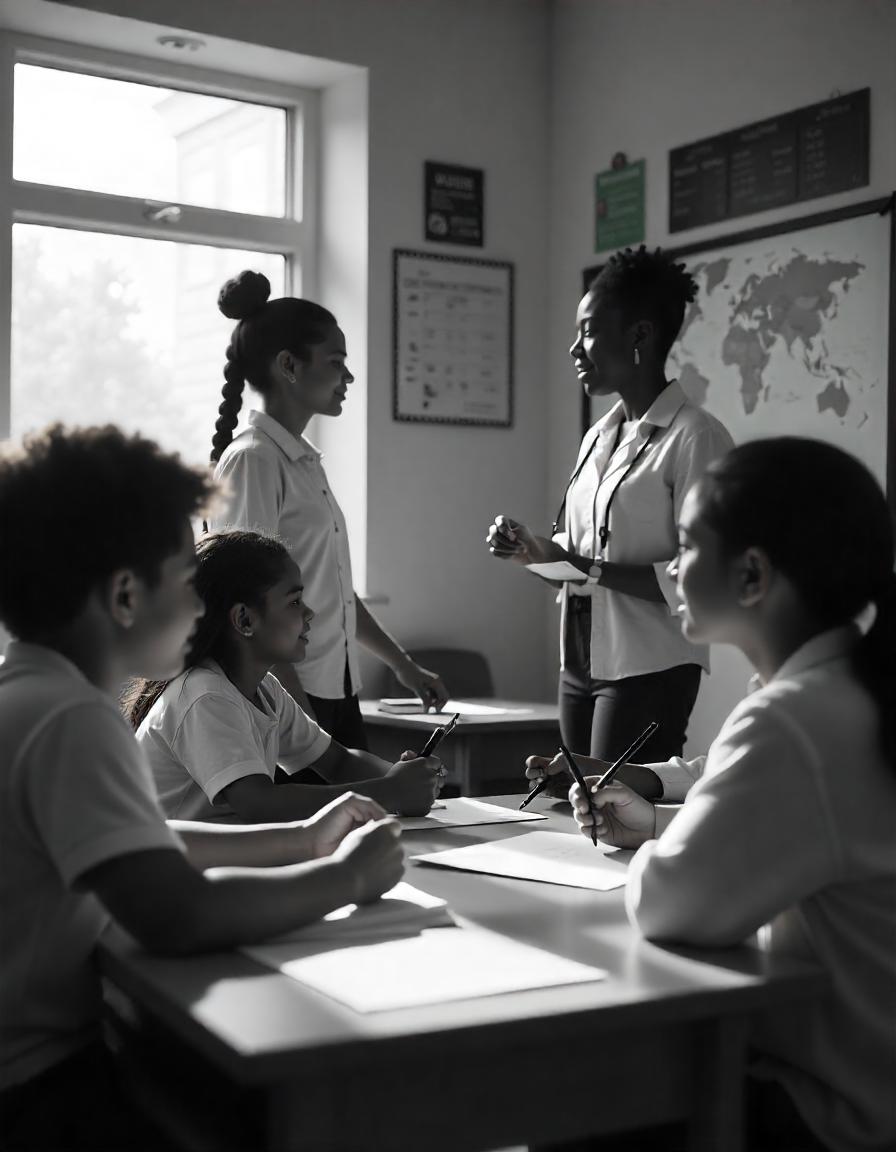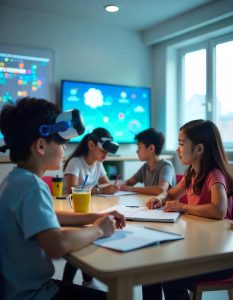Curricula serve as the backbone of educational systems, outlining the knowledge, skills, and competencies that students are expected to acquire throughout their schooling. They play a critical role in shaping educational experiences and outcomes, influencing everything from teaching methods to student assessments. As nations strive to prepare their students for an increasingly complex and interconnected world, understanding the differences in curricula across various countries becomes essential. This article aims to explore and compare the curricula of different countries, highlighting key differences and similarities that reflect their unique cultural, historical, and educational contexts.
Definition of Curriculum
A curriculum encompasses the planned and guided learning experiences provided by educational institutions. It includes the subjects taught, the content covered, the teaching methods employed, and the assessment strategies used to evaluate student progress. Curricula can be categorized into several types:
– National Curriculum: A standardized set of guidelines established by a government to ensure consistency across schools.
– Local Curriculum: Tailored curricula developed by individual schools or districts to meet the specific needs of their student populations.
– Hidden Curriculum: The implicit lessons and values conveyed through the school environment and culture, which may not be formally included in the official curriculum.
– Formal Curriculum: The explicit content and skills that are taught in classrooms.
Historical Context of Curricular Development
The development of curricula has been significantly influenced by historical events and cultural shifts. For instance, the rise of industrialization in the 19th century led many countries to adopt curricula that emphasized technical skills and vocational training to meet the demands of the workforce. In contrast, post-war educational reforms in many Western countries focused on fostering critical thinking and creativity, reflecting a shift towards a more holistic approach to education.
In countries like Japan, the influence of traditional philosophies, such as Confucianism, has shaped curricula to emphasize discipline, respect for teachers, and a strong foundation in mathematics and science. Similarly, in many African nations, the colonial legacy has impacted curricular content, often prioritizing the language and culture of the colonizers over indigenous knowledge.
Core Subjects and Educational Goals
Curricula across different countries typically include core subjects such as mathematics, science, language arts, and social studies. However, the emphasis placed on these subjects can vary significantly. For example:
– Finland: The Finnish curriculum emphasizes a broad-based education that fosters creativity and critical thinking, with equal importance given to arts and physical education alongside traditional academic subjects.
– United States: The U.S. curriculum often focuses on standardized testing in core subjects, with a strong emphasis on STEM (science, technology, engineering, and mathematics) education to prepare students for future careers.
– Singapore: The curriculum in Singapore is known for its rigor, particularly in mathematics and science, with a strong emphasis on high-stakes assessments that drive student performance.
Educational goals also differ; some countries prioritize academic excellence, while others focus on developing well-rounded individuals with social and emotional skills.
Flexibility and Elective Courses
The flexibility of curricula can greatly influence students’ educational experiences. In some countries, students have the opportunity to choose elective courses that align with their interests and career aspirations. For example:
– Germany: The German education system offers a dual system that combines classroom learning with vocational training, allowing students to tailor their education to their career goals.
– United Kingdom: In the UK, students in secondary education can select from a range of subjects, including vocational options, which allows for a more personalized educational experience.
In contrast, other countries may have more rigid curricula with limited options for electives, focusing primarily on core subjects until later stages of education.
Assessment and Evaluation Methods
Assessment methods are a critical component of curricula, impacting how student performance is measured and how learning is facilitated. Different countries employ various approaches:
– Standardized Testing: Many countries, such as the United States and China, rely heavily on standardized tests to evaluate student performance and determine school funding. These assessments can drive curriculum design and teaching methods.
– Formative Assessments: Countries like Finland emphasize continuous assessment methods that encourage learning and provide feedback throughout the educational process, rather than relying solely on high-stakes testing.
– Alternative Evaluation Methods: Some educational systems are exploring alternative assessment methods, such as portfolios and project-based assessments, to provide a more comprehensive view of student learning.
Influence of Technology on Curriculum Design
The integration of technology into curriculum design has transformed how education is delivered. Countries leading in educational technology, such as South Korea and Estonia, have developed curricula that incorporate digital tools and resources from an early age. For instance:
– Estonia: The Estonian education system emphasizes digital literacy, integrating technology into everyday learning and teaching students to use digital tools effectively.
– South Korea: In South Korea, classrooms are equipped with advanced technology, and students are encouraged to engage with online learning platforms that complement their education.
However, the extent of technology adoption varies widely, with some developing nations facing challenges in access to technology and the internet, which can hinder the effective integration of digital tools into their curricula.
Inclusivity and Adaptation in Curricula
Inclusivity in education is essential to ensure that all students, regardless of their backgrounds or abilities, have access to quality learning experiences. Different countries approach inclusivity in their curricula in various ways:
– Scandinavia: Countries like Sweden and Norway prioritize inclusive education, with curricula designed to accommodate diverse learning needs. This includes providing support for students with disabilities and those from marginalized communities.
– United States: The U.S. has implemented laws such as the Individuals with Disabilities Education Act (IDEA), which mandates that students with disabilities receive tailored educational plans. However, the effectiveness of inclusivity measures can vary significantly across states and districts.
Adaptive curricula that cater to various learning styles and backgrounds are becoming increasingly important. Educators are encouraged to use differentiated instruction techniques to meet the diverse needs of their students, ensuring that every learner can engage with the material meaningfully.
Recent Trends in Curriculum Development
As the educational landscape continues to evolve, several trends are shaping curriculum development worldwide:
– Competency-Based Education: This approach focuses on students demonstrating mastery of specific skills and knowledge rather than simply completing a set number of courses. It allows for greater flexibility and personalization in learning pathways.
– Interdisciplinary Approaches: Many educational systems are moving towards interdisciplinary curricula that connect subjects and encourage critical thinking. For example, project-based learning often combines elements from science, technology, engineering, arts, and mathematics (STEAM) to create a more integrated educational experience.
– Emphasis on Social-Emotional Learning (SEL): Recognizing the importance of mental health and emotional well-being, many curricula now include components that foster social-emotional skills, helping students develop resilience, empathy, and interpersonal skills.
Looking ahead, educational systems will need to adapt to the challenges posed by globalization, technological advancements, and changing job markets. The ability to cultivate critical thinking, creativity, and adaptability will be essential for students to thrive in an increasingly complex world.
Conclusion
The comparison of educational curricula across different countries reveals significant differences shaped by historical, cultural, and socioeconomic factors. While some countries prioritize academic rigor and standardized assessments, others focus on holistic development and inclusivity. Understanding these differences is crucial for educators, policymakers, and stakeholders seeking to improve educational practices and outcomes globally.
As countries continue to learn from one another and share best practices, the goal should be to create curricula that are inclusive, equitable, and capable of preparing students for the challenges and opportunities of the future. By embracing innovation and prioritizing the needs of all learners, we can foster a more educated and empowered global society.
References
– World Bank. (2020). “Education Overview.” Retrieved from [World Bank Education](https://www.worldbank.org/en/topic/education/overview)
– OECD. (2021). “Education at a Glance 2021: OECD Indicators.” Retrieved from [OECD Education](https://www.oecd.org/education/education-at-a-glance/)
– UNESCO. (2021). “Global Education Monitoring Report 2021.” Retrieved from [UNESCO GEM Report](https://en.unesco.org/gem-report/)
– Finnish National Agency for Education. (2020). “Education in Finland.” Retrieved from [Finnish Education](https://www.oph.fi/en)
– U.S. Department of Education. (2021). “The Condition of Education 2021.” Retrieved from [National Center for Education Statistics](https://nces.ed.gov/programs/coe/)
This article aims to provide a comprehensive overview of the differences in educational curricula around the world, highlighting the importance of context in shaping educational practices and outcomes. By understanding and appreciating these differences, we can work towards creating more effective and inclusive educational systems that meet the needs of all students.



